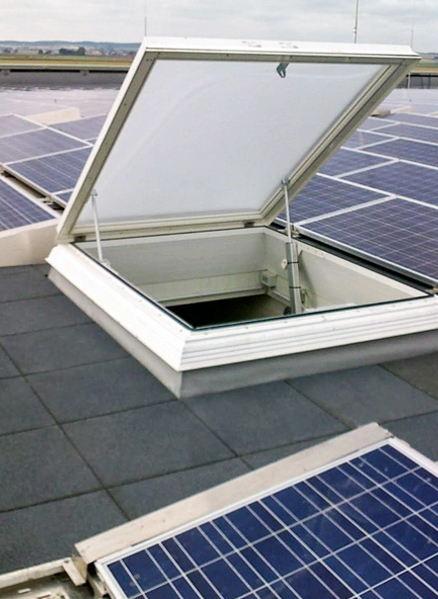The gas strut, also known as the gas spring, is a mechanical device that uses the principle of gas compression to provide support. It is mainly composed of a cylinder, a piston rod, a piston and compressed gas (usually nitrogen). Marine gas struts are similar to ordinary gas struts, but are specially designed for marine environments to cope with more demanding conditions of use. Its working principle is as follows:
The interior of the marine gas strut is filled with high-pressure gas. When the piston rod is pushed into the cylinder, the internal gas is compressed to generate pressure, thereby providing an outward support force.
The marine gas strut can control the speed of opening or closing by adjusting the pressure of the internal gas or changing the structure of the cylinder, making the operation process smooth and safe.
Marine gas struts are usually made of corrosion-resistant materials, and the internal sealing design is adopted to prevent damage to them by seawater and salt spray, ensuring that they can still work stably in harsh marine environments.

Marine gas struts have some special characteristics in the design and manufacturing process to ensure good performance in the marine environment. These characteristics include:
Marine gas struts are usually made of stainless steel, aluminum alloy or other anti-corrosion materials. In order to enhance corrosion resistance, some gas struts are also nickel-plated or zinc-plated to ensure that they will not rust or be damaged in high humidity and high salt environments.
The interior of the gas strut is usually sealed, which can effectively prevent seawater and moisture from entering the cylinder and prevent the internal components from failing due to moisture erosion. At the same time, waterproof sealing can also extend the service life of the gas strut.
The design of marine gas struts usually has a buffer function to ensure that they can slow down slowly during the closing of hatches, deck covers, etc., to prevent damage or safety accidents caused by sudden closing.
In the marine environment, the equipment may be subjected to large winds and waves and pressure, so the marine gas struts must have strong bearing capacity and high pressure performance to cope with the load requirements in different use environments.
Marine gas struts can be customized according to specific needs, including length, diameter, support force and installation method, so that they can adapt to various different ships and marine equipment.
Marine gas struts have a wide range of applications in ships and marine equipment, mainly including the following aspects:
On ships, gas struts are often used to support and open hatch covers and deck covers. They provide stable support, ensuring that it is easier to open and close the hatch cover, and no additional auxiliary force is required, which reduces the difficulty of operation.
Marine gas struts are also widely used in the opening and closing of windows and doors of ships. By using gas struts, operators can open and close windows and doors more smoothly, reduce the risk of accidental closure due to waves and wind, and improve the safety of ship operation.
In the engine room and other equipment areas that need maintenance, gas struts are often used to support equipment covers. Gas struts can effectively prevent equipment covers from being accidentally closed during maintenance and improve the safety of operators.
Some high-end yachts and luxury ships' interior furniture, such as lockers, folding tables, etc., also use gas struts to increase convenience and comfort.
Gas struts can also be used for the rapid opening and deployment of emergency and rescue equipment, such as life raft hatch covers, life-saving equipment boxes, etc., to ensure that they can be used quickly and effectively in emergency situations.
The use of marine gas struts can avoid sudden closure of equipment and reduce injuries and damage caused by collisions, especially in harsh marine environments. This advantage is particularly significant.
Marine gas struts can reduce the force of opening and closing equipment, making operation easier. Whether it is a hatch, window or engine room cover, the use of gas struts can reduce the physical burden on operators.
Marine gas struts with anti-corrosion materials and waterproof design perform well in long-term marine use, reduce the frequency of replacement and maintenance, and reduce the cost of ship operation.
Gas struts can be adjusted and customized according to specific needs to adapt to different application scenarios and equipment, making them extremely flexible in ships and marine equipment.
With the development of materials science, new anti-corrosion materials and lightweight materials will be gradually applied to marine gas struts to further improve their performance and reduce weight.
Future marine gas struts may be combined with intelligent control systems to achieve intelligent adjustment of support force and opening and closing speed, and improve the automation and precision of operation.
With the enhancement of environmental awareness, future marine gas struts will pay more attention to environmental protection in material selection and production processes to reduce the negative impact on the marine environment.
As an important component of ships and marine equipment, marine gas struts play an important role in modern shipbuilding and maintenance with their high corrosion resistance, convenient operation and safety performance. With the development of technology and changes in market demand, the application of marine gas struts will become more extensive and their performance will continue to improve, providing more reliable protection for the safety and convenience of ships and marine equipment.